The music theory term “key signatures” is something that has the power to bore musicians and non-musical people alike. It sounds so cold and scientific and, well, unmusical. But like anything else in music theory, key signatures are simply devices meant to explain and help us understand what music is and how it works, so it’s a good idea to get over how boring you might think music theory ideas are to help you see the bigger picture of music. The persistent myth of music theory being hard to understand and useless for musicians to learn is a destructive one that we should all work to dispel.
Why Understanding Key Signatures Is Important
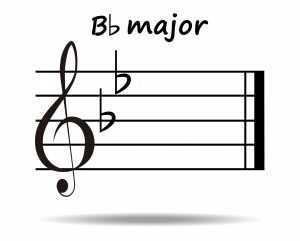
Once you gain an understanding of how to build key signatures in music, you’ll begin to see and hear music in a completely new light. If we learn a few simple rules about how each key is constructed, we’ll be able to instantly know things like what key pieces of music are in and how to build every basic chord in every key. If you want to remove the veil that shrouds how music works, taking the time to figure out how key signatures work is a great first step. In this article, we’ll show you how easy it is to understand key signatures within music. You don’t need to play piano to understand the concepts we’ll be introducing and discussing here, but we recommend at least printing out or drawing a representation of at least an octave of a set of keys on a piano. The keys on the piano are the simplest visual representation of the intervals in music we’ll rely on to build and understand scales and key signatures.
Origins of Key Signatures
Key signatures began showing up in music around the 16th century, but the system of flats and sharps that determine keys as we know them today wasn’t fully standardized until midway through the 17th century. Before standardized key signatures were put into place, musicians would often go to the great trouble of scoring multiple key signatures or “conflicting” key signatures for different musicians performing the same piece of music. The idea of different musicians all playing within one set key was one that was developed after hundreds of years of frustration brought on by the difficulty of composers who were often tasked with attempting to get musicians who played in different ranges, keys, or modes on the same page. Like everything in music, key signatures are meant to help musicians, save time, and produce order and predictability.
Circle of Fifths
If you want to understand the world of key signatures, you’ll want to get familiar with the circle of fifths. The circle of fifths is a simple way of explaining how flats and sharps are added to keys to determine key signatures. We’ll start at the top of the circle which is the key of C major. C major has no flats or sharps, so by default it’s the easiest key to understand and play in. Now we’ll discuss the fifths part of the circle of fifths. A fifth refers to the interval above a note. Here’s where it gets slightly tricky. An interval of a fifth is located 7 half steps away from the original note. On the keyboard, a half step is the distance between C and C#. Starting with the note of C, if we count seven half steps above, we’ll arrive at the note of G. This is the right side of the circle; the one with the sharps.
![]()
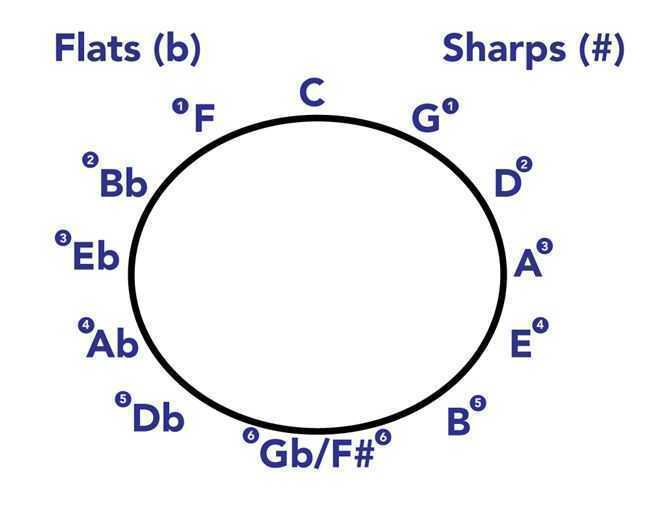
Once we’re at the key of G, we’ll add one new sharp for every new key on the circle. Every new key will retain the old sharp we’ve already added. The new sharps that we’ll add are located a half step lower than the note that defines the key signature. For example, starting with the key of G, we’ll add in a note of F#. Then moving on to D, we’ll keep the F# we added and we’ll add a new C#. We’ll do this all the way down till we reach the bottom of the circle with the key of F# which contains a whopping six sharps.
Now let’s move over to the left side of the circle. The circle of fifths moves clockwise, and starting with the key of F, we’ll start counting a fifth backwards (C is located a fifth above F). We’ll add in one flat for every new key we introduce. Unlike the keys with sharps, the flats in these keys are located on the fourth scale degree. For example, the key scale of F major is F-G-A-Bb-C-D-E-F. Moving down through the circle, we’ll keep all the old flats in while adding in a new one for each key till we reach the bottom of the circle with the key of Gb major with six flats.
Parallel Minors
So far, everything we’ve talked about here has revolved around major keys, but once you learn how to understand major key signatures, you’ll be able to easily understand minor ones as well. Every major key has its own parallel minor key that features the same notes and flat/sharp makeup. Parallel minor keys are located three half steps (a minor 3rd) below their major counterparts. For example, the key of C major, which again features no flats or sharps, has the parallel key of A minor. The key of G major has a parallel minor of E minor.
The keys of G major and E minor share the same notes:
G Major
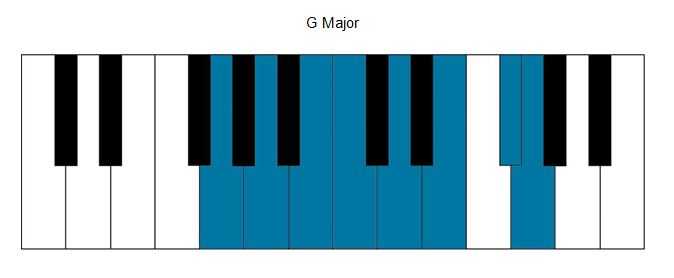
E Minor
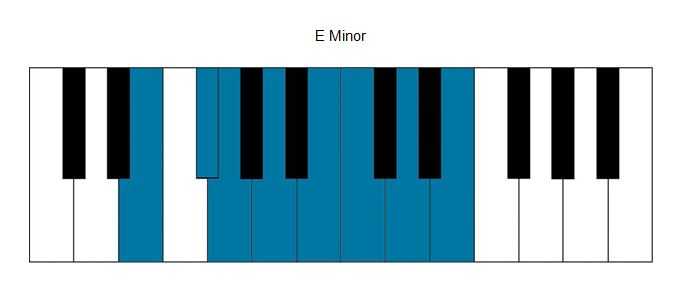
Putting Key Signature Knowledge Into Practice
Now that you know how to build major and minor keys, you’ll be able to build scales and chords on any note found in music. Major and minor scales are easily built by playing the natural and accidental (accidental notes are other names for flats and sharps) notes in order. For example, the Key of A major features a major scale of A-B-C#-D-E-F#-G#-A. Chords are built just as easily off of triads (clusters of three notes) found in key signatures. In-depth explanations of how to build chords and scales can be found in our recent article on basic music theory.
Understanding key signatures is a gateway to understanding how music works, and luckily, they are quite easy to understand. On your main instrument, try playing chords from these various key signatures to get your bearings.

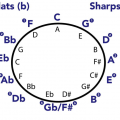
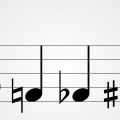



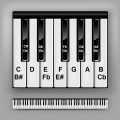
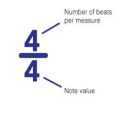
Love reading your blog! Great content, keep up
the good work:)